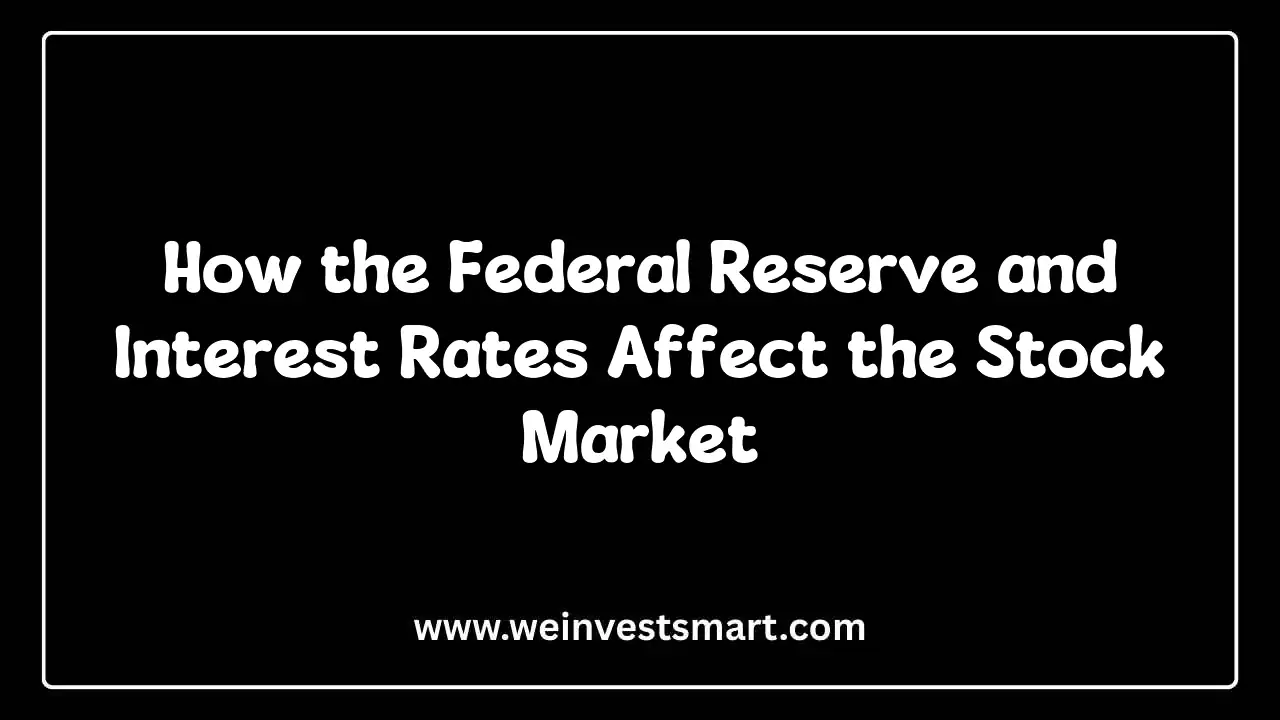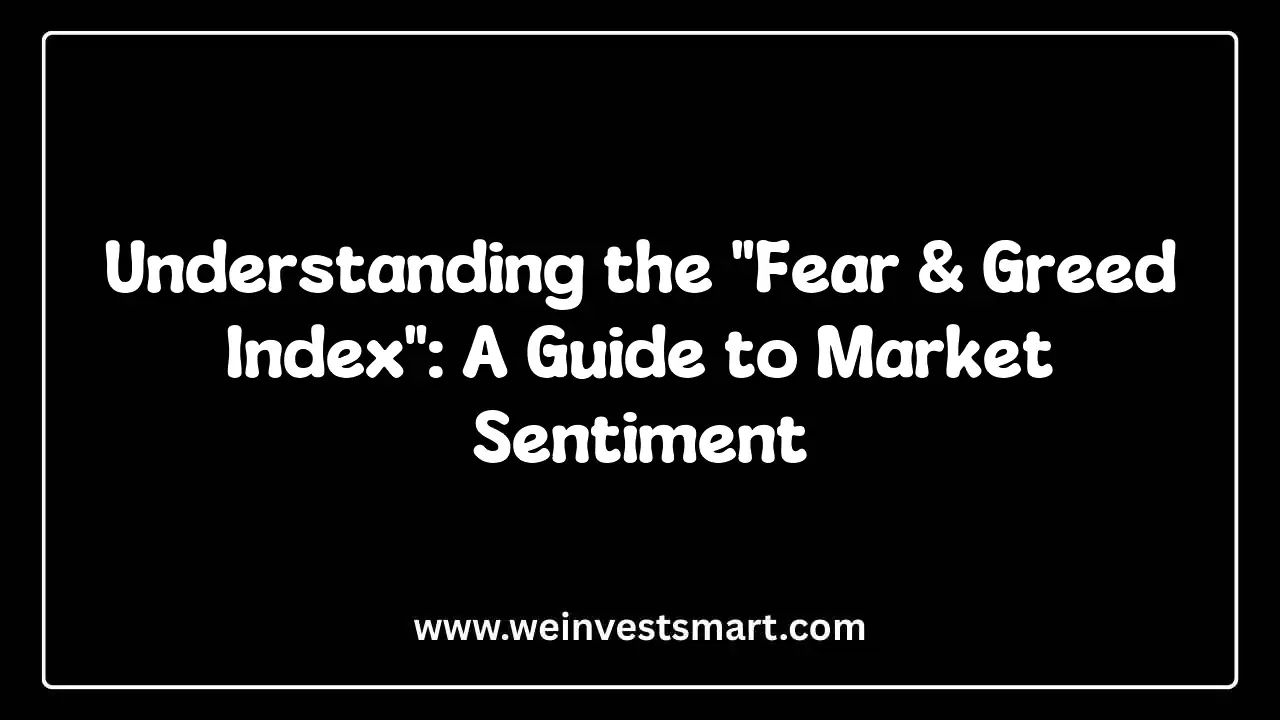· WeInvestSmart Team · market-analysis · 10 min read
Bull vs. Bear Markets: What They Are and How to Invest in Each
A deep dive into the psychology and strategies of bull and bear markets. Learn to move beyond fear and greed, and discover how to build wealth by understanding the market's natural cycles.
Most investors make their biggest mistakes without even realizing it, driven by two of the most powerful forces in human nature: fear and greed. In a rising market, they feel like geniuses, throwing money at speculative assets, convinced the party will never end. When the market falls, they panic, selling everything at the bottom in a desperate attempt to stop the pain. But here’s the uncomfortable truth: the market isn’t your enemy. Your own brain is. Going straight to the point, your success or failure as an investor has less to do with picking the right stocks and more to do with controlling your own psychology during the market’s inevitable cycles.
We’ve all heard the terms bull market for a rising market and bear market for a falling one. But for many, these are just abstract concepts—until their life savings are on the line. When every headline is screaming about record highs or catastrophic losses, the idea of having a calm, rational strategy seems like a fantasy.
But what if we told you that these cycles aren’t random? That they are a natural, predictable, and even necessary part of how wealth is created? Here’s where things get interesting. Bull and bear markets aren’t just events to be survived; they are distinct seasons for investing, each with its own set of rules and opportunities. Learning to navigate them is the single most important skill you can develop. And this is just a very long way of saying that it’s time to stop letting the market control you, and start building a strategy that works in any market.
Your Brain on Wall Street: The Psychology That’s Sabotaging Your Returns
Before we dive into tactics, we have to confront the real opponent: the deeply ingrained psychological biases that cripple investors. The problem isn’t a lack of information; it’s that your brain is wired for short-term survival, not long-term investing. During a roaring bull market, the dominant emotion is a heady mix of greed and FOMO (Fear Of Missing Out). You see others getting rich, and your brain screams at you to jump in before you’re left behind. This often leads to buying assets at their absolute peak, right before a downturn.
Going straight to the point, a bull market makes you feel invincible. When everything is going up, it’s easy to confuse luck with skill. This overconfidence leads to taking on excessive risk and abandoning the principles of diversification that protect you when the tide inevitably turns. You stop seeing risk and only see reward, a classic psychological trap.
The funny thing is, the emotional response in a bear market is even more powerful and destructive. As prices fall, fear and panic take over. Your brain’s loss aversion kicks in—a psychological principle where the pain of losing is emotionally twice as powerful as the pleasure of gaining. This overwhelming fear causes you to sell your investments at the worst possible moment, locking in losses and guaranteeing you miss the eventual recovery. This is the cycle of buying high and selling low—the exact opposite of what you’re supposed to do. You must understand this to break the pattern.
Defining the Beasts: What Are We Really Talking About?
Let’s get our definitions straight. These aren’t just vague feelings; they have technical meanings that signal a major shift in market sentiment. The names themselves are thought to come from the way the animals attack: a bull thrusts its horns up, while a bear swipes its paws down.
- A Bull Market: This is a period of sustained optimism and rising prices. Technically, it begins when a major market index, like the S&P 500, rises by 20% or more from its recent lows. Bull markets are often accompanied by a strong economy, low unemployment, and growing corporate profits.
- A Bear Market: This is the opposite—a period of widespread pessimism and falling prices. It’s officially declared when a market index drops by 20% or more from its recent highs. Bear markets typically happen during economic slowdowns and recessions, shaking investor confidence and causing a flight to safety.
Historically, bull markets tend to last much longer than bear markets. While the pain of a bear market feels intense, they are usually shorter, with a median duration of about 19 months, whereas bull markets have a median length of 42 months. This sounds like a trade-off, but it’s actually the key to long-term success: the periods of growth are longer and stronger than the periods of decline. Your job is to simply stay in the game long enough to benefit from this long-term upward trend.
The Bull Market Playbook: How to Ride the Wave
Investing during a bull market seems easy, but it comes with its own set of challenges, primarily centered on avoiding complacency and overconfidence. Here’s your game plan for thriving when the market is climbing.
- Stay Invested and Let Your Winners Run: The single biggest mistake investors make during a bull market is trying to time the top. They sell out too early, locking in modest profits while missing the biggest leg of the rally. The data is clear: the market’s best days often happen in close proximity to its worst. Missing just a handful of the best days can devastate your long-term returns. The core principle here is “time in the market, not timing the market.”
- Focus on Growth, But Don’t Chase Hype: Bull markets are fueled by optimism about the future, making it a great time to be invested in growth-oriented companies. These are businesses expected to grow their revenues and earnings faster than the overall market. However, you must distinguish between innovative companies with solid fundamentals and speculative “story stocks” with no real earnings. A rising tide lifts all boats, but when the tide goes out, you’ll discover who’s been swimming naked.
- Rebalance Periodically, But Gently: As your stocks surge in value during a bull run, they will naturally become a larger percentage of your portfolio. This can throw your asset allocation out of whack and leave you overexposed to a potential downturn. Periodically rebalancing—selling some of your appreciated assets and reinvesting the proceeds into underperforming ones (like bonds)—is a disciplined way to lock in some gains and manage risk. This forces you to sell high and buy low, the bedrock of smart investing.
The Bear Market Playbook: Where Fortunes Are Really Made
This is where things get interesting. Most people view a bear market as a disaster. Sophisticated investors, however, see it for what it is: the single greatest wealth-building opportunity. A bear market is a sale on high-quality assets. Here’s how you not only survive but actually thrive.
- Prioritize Quality and Durability: When the economy slows and fear takes hold, investors flee from speculative, unprofitable companies and flock to businesses with strong balance sheets, consistent cash flow, and durable competitive advantages. These “defensive” stocks are often in sectors like consumer staples, healthcare, and utilities—companies that sell goods and services people need regardless of the economic climate. During a bear market, your mantra should be: “Is this a business that can survive a recession?”
- Fall in Love with Dividends: Dividend-paying stocks are a secret weapon in a bear market. A dividend is a portion of a company’s profits paid out to shareholders. This provides you with a steady stream of cash flow even as the stock price is falling. This has two powerful effects:
- Psychological Cushion: Getting paid to hold an investment makes it far easier to stomach price declines and resist the urge to panic sell.
- Return Accelerator: Reinvesting those dividends allows you to buy more shares at depressed prices. When the market eventually recovers, those extra shares will supercharge your returns.
- Embrace Dollar-Cost Averaging (DCA): This is perhaps the most powerful and emotionally calming strategy for a bear market. Dollar-cost averaging is the practice of investing a fixed amount of money at regular intervals, regardless of the price. If you contribute to a 401(k), you’re already doing it. Here’s why it’s so effective in a downturn:
- When prices are high, your fixed investment buys fewer shares.
- When prices are low (during a bear market), your same fixed investment buys more shares. This automatically forces you to buy low. Over time, it lowers your average cost per share, positioning you for outsized gains when the bull market returns. It turns market volatility from a source of fear into an advantage.
What If I Get It Wrong? The Absurd Standard of Perfection
But what do we do if we can’t perfectly time the transition from bull to bear? What if we buy thinking it’s the bottom, only to see the market fall another 15%?
And here is where things get interesting: this is not a failure. It’s an inevitability. The goal isn’t to be perfect. The funny thing is that trying to perfectly time the market is an absurd standard to put on yourself. No one can do it consistently. And this is just a very long way of saying that your strategy should not depend on prediction. A robust, long-term plan works because it acknowledges that you won’t get the timing right. By consistently investing through dollar-cost averaging and focusing on quality, you build a portfolio that is resilient enough to withstand the cycles without needing a crystal ball.
The Bottom Line: It’s a Cycle, Not an Apocalypse
Understanding the dynamic between bull and bear markets is to understand the very heartbeat of the economy. They are not forces to be feared, but cycles to be understood and leveraged. The euphoria of the bull and the despair of the bear are two sides of the same coin, and both are temporary.
The uncomfortable truth is that your emotional discipline, not your analytical genius, will ultimately determine your long-term success. A bull market will test your humility, and a bear market will test your courage. By having a clear plan—staying invested during the good times, and continuing to buy quality assets during the bad—you can move beyond the primal reactions of fear and greed. You get the gist: stop trying to outsmart the market and instead, build a strategy that harnesses its natural rhythm to build lasting wealth.
This article is for educational purposes only and should not be considered personalized financial advice. Consider consulting with a financial advisor for guidance specific to your situation.
Bull and Bear Markets FAQ
What is a bull market?
A bull market is a period of sustained rising prices in the financial markets, typically when a major index like the S&P 500 increases by 20% or more from recent lows. It’s characterized by investor optimism and economic growth.
What is a bear market?
A bear market is when a market index falls by 20% or more from recent highs. It is characterized by widespread pessimism, investor fear, and often coincides with an economic slowdown.
How should I invest in a bull market?
In a bull market, the primary strategy is to stay invested to take advantage of rising prices. Focus on growth-oriented assets, let your winners run, and maintain a diversified portfolio. Avoid the temptation to time the market by selling too early.
How should I invest in a bear market?
In a bear market, focus on defensive strategies. Invest in high-quality companies with strong balance sheets and consistent dividends. Use dollar-cost averaging to buy assets at lower prices. The key is to avoid panic selling and view the downturn as a buying opportunity.
What is dollar-cost averaging?
Dollar-cost averaging is an investment strategy where you invest a fixed amount of money at regular intervals, regardless of the asset’s price. This practice helps reduce the impact of volatility, as you buy more shares when prices are low and fewer when they are high.



